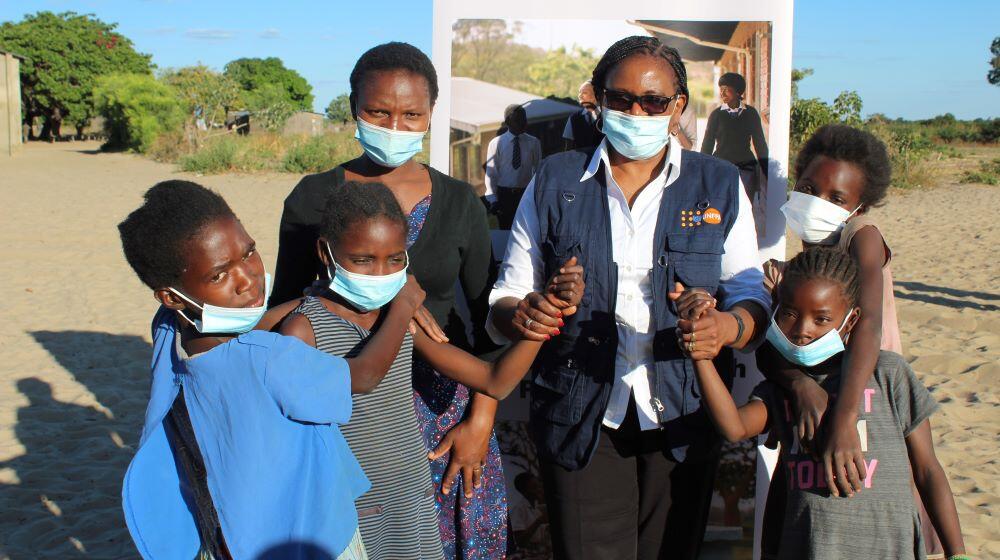An opinion piece by UNFPA Zambia Country Representative, Ms. Gift Malunga.
We are reaching a critical time in the history of human existence. According to the United Nations, the world will be home to 8 billion by 15 November 2022. We are welcoming each new billionth-person at an ever increasing rate, noting that it has taken only 11 years to add 1 billion people to the planet, since October 2011.
Unquestionably, a world of 8 billion cues a widespread debate about sustainability of human existence. On one hand, a popular concern by many is that there are too many people chasing too few resources, with unequal access to the resources that exist. It is projected that we would need 70% more food requirements by 2050, to keep up with an increased demand for food
Yet this is not necessarily as unsettling as it sounds. The arrival of this milestone - 8 billion people sharing the planet at one time - is also cause for optimism. It is a mark of improvement in medicine and health systems, and a landmark in human survival. But whether we have 8 billion people or 1 trillion, we still have only one planet, which has finite resources.
Catching them whilst they are young
The addition of 1 billion people within a space of only 11 years reminds us that we are overwhelmingly a youthful planet. Considering our population will continue to rise for some time, the big question is: how do we secure sustainable development as our population continues to grow beyond 8 billion?
Since the beginning of my career, I have always believed that the answer to that question is remarkably simple – it rests on young people, especially the adolescent girl!
In Zambia, current data shows that 82% of the country’s population is comprised of young people - which is the population aged below 35. This translates to 10.7 million young people! The next chapter for Zambia depends on this number.
With the largest population of young people in its history, Zambia has a unique opportunity to reap a “demographic dividend”, which is the economic growth potential that occurs when there are growing numbers of people in the workforce relative to the number of dependents. This means that a country with both increasing numbers of young people and declining fertility has the potential to reap this demographic bonus, provided systematic and holistic investments towards young people’s health, education, employment and empowerment, are available.
Shifting focus from “numbers” to “possibilities” for adolescent girls
Whilst Zambia continues to record steady improvements in key development indicators, adolescent girls, sadly, continue to profile among Zambia’s critical development challenges.
Data shows that 1 in 3 girls (29%) become mothers, while practically children themselves, while another 1 in 3 girls (29%) are married by the age of 18 years. Adolescent pregnancy is the only reproductive health indicator that has not improved since the previous Zambia Demographic and Health Survey of 2014.
From an economic perspective, adolescent pregnancy remains one of the key factors driving inter-generational poverty in many developing countries like Zambia, with corresponding impacts on availability of skilled workforce required to grow an inclusive and strong economy. The lifetime opportunity cost related to adolescent pregnancy, measured by the mother’s foregone annual income over her lifetime, ranges as high as 30% in developing countries such as Zambia.
Looking behind the number, 8 billion reveals that adolescent pregnancy cannot be left unchallenged.
This brings us to the heart of the issue: how do we as decision makers at community and national level make the right investments in our fast growing and youthful population, thus ensuring a sustainable future for us all?
The current efforts by the Government, civil society, community leaders and cooperating partners to scale-up multi-sectoral national responses to adolescent pregnancy is indeed commendable. However, as we welcome the 8 billionth person to the world, it will be increasingly critical to enhance investments in access to health, education, skills and employment opportunities for young people, especially girls.
A combination of policies and interventions that address these critical areas will improve development outcomes for adolescent girls, thereby providing necessary conditions to harness a demographic dividend, towards a sustainable future for our country, and the planet at large.
There is cause for optimism when adolescent girls are empowered to fulfil their potential. No matter the size of the world population, as leaders and policymakers, we must remain committed to the rights of every individual, especially the girl child.
As highlighted by the UNFPA Executive Director, Dr Natalia Kanem, in her message for the 2022 World Population Day: "People are the solution, not the problem. Numbers matter, but let's count carefully. A resilient world of 8 billion, a world that upholds individual rights and choices, offers infinite possibilities - possibilities for people, societies and our shared planet to thrive and prosper”.


